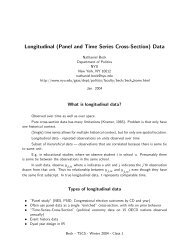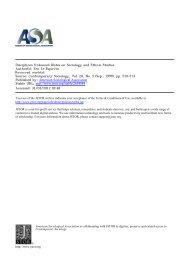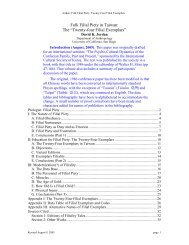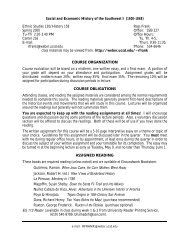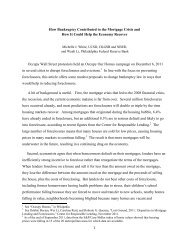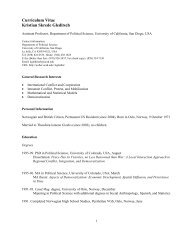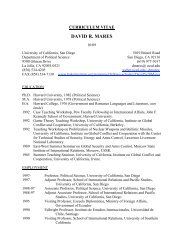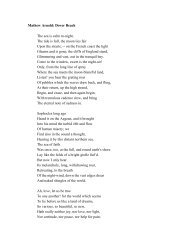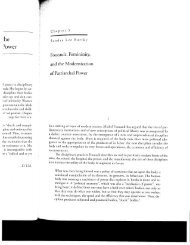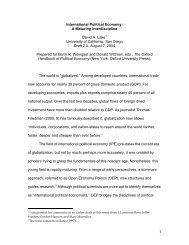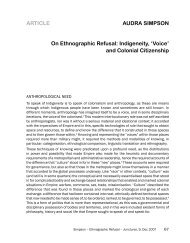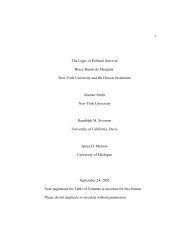Climate change and water resources in the Murray Darling Basin ...
Climate change and water resources in the Murray Darling Basin ...
Climate change and water resources in the Murray Darling Basin ...
You also want an ePaper? Increase the reach of your titles
YUMPU automatically turns print PDFs into web optimized ePapers that Google loves.
ABARE CONFERENCE PAPER 02.11<br />
efficiency <strong>in</strong> <strong>the</strong> <strong>Murray</strong> Darl<strong>in</strong>g Bas<strong>in</strong> rema<strong>in</strong>s largely unknown. Prior to <strong>the</strong> cap be<strong>in</strong>g<br />
placed on diversions <strong>in</strong> 1995, <strong>the</strong>re was little <strong>in</strong>centive for irrigators to <strong>in</strong>crease <strong>water</strong> use<br />
efficiency <strong>and</strong> hence <strong>the</strong>re is likely to be considerable room to adopt <strong>water</strong> sav<strong>in</strong>g technologies<br />
<strong>and</strong> practices <strong>in</strong> many areas. Hafi, Kemp <strong>and</strong> Alex<strong>and</strong>er (2001) reports that total<br />
system losses could be reduced by around 50 per cent with <strong>the</strong> refurbishment of channels,<br />
<strong>in</strong>creased use of drip irrigation <strong>and</strong> reuse systems <strong>in</strong> two irrigation areas <strong>in</strong> <strong>the</strong><br />
Murrumbidgee catchment. In <strong>the</strong> horticultural areas of South Australia, <strong>water</strong> use efficiency<br />
is relatively high, of <strong>the</strong> order of 75–80 per cent, because closed delivery systems are<br />
used. However, improved management techniques, such as <strong>the</strong> use of moisture probes to<br />
improve schedul<strong>in</strong>g <strong>and</strong> reduce irrigation depths, have <strong>the</strong> potential to substantially <strong>in</strong>crease<br />
<strong>water</strong> use efficiency on-farm (Anthony Meisner, Department of Environment, Heritage<br />
<strong>and</strong> Aborig<strong>in</strong>al Affairs, South Australia, personal communication, November 2000 <strong>and</strong><br />
April 2002).<br />
In <strong>the</strong> <strong>water</strong> use efficiency scenario, irrigation losses through ground <strong>water</strong> leakage,<br />
dra<strong>in</strong>age <strong>and</strong> overl<strong>and</strong> return flows were reduced by 50 per cent over <strong>the</strong> 100 year simulation.<br />
For example, <strong>in</strong> a region with a base level of <strong>water</strong> use efficiency of 60 per cent,<br />
an additional 20 per cent was phased <strong>in</strong> to <strong>in</strong>crease efficiency by 80 per cent by 2100. It is<br />
likely that improvements would occur <strong>in</strong> response to <strong>the</strong> decreased availability of <strong>water</strong><br />
for irrigation. Therefore, <strong>the</strong> rate at which efficiency ga<strong>in</strong>s were <strong>in</strong>troduced was scaled to<br />
match <strong>the</strong> rate of <strong>change</strong> <strong>in</strong> precipitation under <strong>the</strong> different global warm<strong>in</strong>g scenarios.<br />
The <strong>change</strong> <strong>in</strong> precipitation to 2100 was used as a base. For example, if precipitation falls<br />
by 3 per cent <strong>in</strong> 2050 <strong>and</strong> by 10 per cent <strong>in</strong> 2100, <strong>the</strong> reduction <strong>in</strong> irrigation losses <strong>in</strong> 2050<br />
would be 15 per cent; three-tenths of <strong>the</strong> maximum sav<strong>in</strong>gs of 50 per cent. The capital<br />
cost of undertak<strong>in</strong>g <strong>the</strong> efficiency improvements was not <strong>in</strong>cluded <strong>in</strong> <strong>the</strong> analysis.<br />
After <strong>in</strong>creas<strong>in</strong>g irrigation efficiency, less <strong>water</strong> is needed to ma<strong>in</strong>ta<strong>in</strong> <strong>the</strong> same level of<br />
crop production, lead<strong>in</strong>g to <strong>water</strong> sav<strong>in</strong>gs. Under <strong>the</strong> current property rights structure <strong>in</strong><br />
<strong>the</strong> <strong>Murray</strong> Darl<strong>in</strong>g Bas<strong>in</strong>, irrigators have <strong>the</strong> implicit right to reta<strong>in</strong> <strong>the</strong> <strong>water</strong> saved. In<br />
<strong>the</strong> simulations presented here, irrigators reta<strong>in</strong> <strong>the</strong>se sav<strong>in</strong>gs <strong>and</strong> use <strong>the</strong>m to exp<strong>and</strong> irrigated<br />
production. Alternatives not considered <strong>in</strong>clude leav<strong>in</strong>g <strong>the</strong> sav<strong>in</strong>gs <strong>in</strong> <strong>the</strong> river as a<br />
dilution flow or trad<strong>in</strong>g <strong>the</strong>m if an operational <strong>water</strong> market exists. The results of <strong>the</strong> <strong>water</strong><br />
use efficiency simulations are presented as <strong>change</strong>s <strong>in</strong> regional agricultural returns.<br />
Water trade scenario<br />
Water trad<strong>in</strong>g between irrigation areas has <strong>the</strong> potential to allow irrigators flexibility to<br />
adapt to climate <strong>change</strong> if <strong>water</strong> can be purchased to meet any shortfall <strong>in</strong> crop requirements.<br />
Even with appropriate property rights <strong>and</strong> <strong>in</strong>stitutional arrangements, <strong>the</strong> potential<br />
to trade <strong>water</strong> from outside <strong>the</strong> catchment does not exist <strong>in</strong> all regions. In <strong>the</strong> nor<strong>the</strong>rn<br />
catchments of <strong>the</strong> <strong>Murray</strong> Darl<strong>in</strong>g Bas<strong>in</strong>, irrigation takes place on tributary rivers <strong>and</strong> <strong>the</strong>re<br />
is little or no potential for <strong>water</strong> to be traded between catchments. However, <strong>in</strong> <strong>the</strong> south-<br />
21




